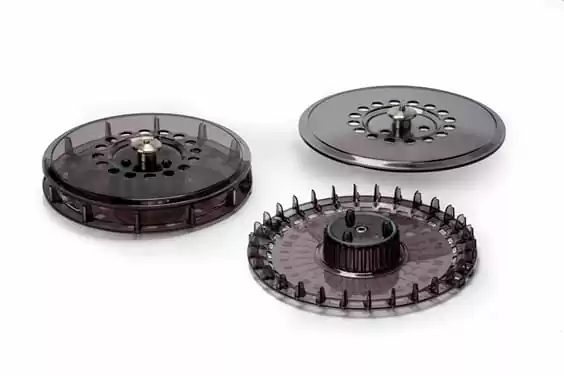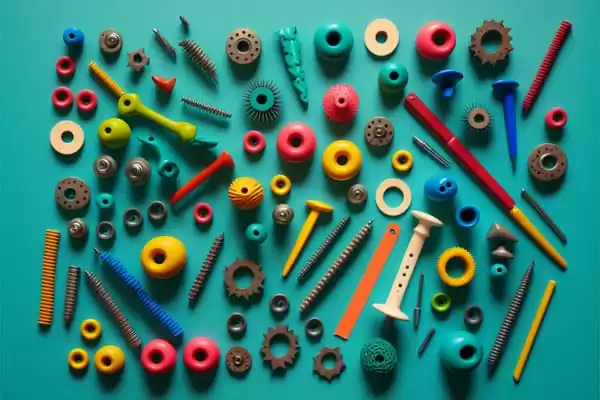Introduction
Injection molding is a widely used manufacturing process for creating plastic parts. It involves injecting molten plastic material into a mold cavity, allowing it to cool and solidify, and then removing the finished product from the mold. This process is highly versatile, efficient, and capable of producing complex and intricate designs with high precision.
Consistency plays a crucial role in injection molding production. Consistency refers to the ability to produce identical quality parts, run after run, with minimal variations. It is essential for ensuring that the final products meet the required specifications and maintain uniformity in terms of dimensions, tolerances, and mechanical properties.
Achieving consistency in injection molding project is vital for several reasons. First and foremost, it directly impacts the overall quality of the molded parts. Consistency ensures that each part meets the desired standards, resulting in reliable and functional end products. Whether the parts are used in consumer goods, automotive applications, medical devices, or any other industry, consistent quality is of utmost importance.

Consistency also contributes to the efficiency of the manufacturing process. By minimizing variations, manufacturers can optimize their production cycles, reduce waste, and enhance productivity. When the injection molding process consistently produces high-quality parts, it streamlines downstream operations and enables smoother assembly and integration into final products.
Furthermore, consistency in injection molding production is crucial for maintaining customer satisfaction. End-users and clients rely on the consistent quality of injection-molded parts to ensure the proper functioning and longevity of their products. Any inconsistencies or defects can lead to performance issues, product recalls, or dissatisfied customers. Consistency, therefore, builds trust and strengthens relationships between manufacturers and their customers.

In the following sections, we will explore various strategies and techniques that can be employed to ensure consistency in injection molding production. By implementing these practices, manufacturers can enhance product quality, reduce costs, increase customer satisfaction, and ultimately achieve success in the highly competitive market.
II. Challenges in Achieving Consistency
Ensuring consistency in injection molding production can present several challenges. These difficulties can have a significant impact on product quality and production efficiency. Let’s discuss these challenges in more detail:
1.Variations in Process Parameters:
Injection molding involves numerous process parameters, such as temperature, pressure, injection speed, cooling time, and more. Controlling and maintaining these parameters within the desired range can be challenging. Small deviations can lead to variations in the final product, affecting its dimensions, surface finish, and mechanical properties.

2.Material Variability:
The properties of plastic resins, additives, and other materials used in injection molding can exhibit variations. Differences in melt temperature, viscosity, flow characteristics, and shrinkage rates can impact the consistency of the molded parts. Manufacturers must carefully select and test materials to minimize these variations.
3.Mold Design and Maintenance:
The design and condition of the injection molds play a crucial role in achieving consistency. Poorly designed molds or inadequate maintenance can result in wall thickness uneven cooling, inconsistent fill patterns, or insufficient venting, leading to defects and inconsistencies in the final product. Regular mold maintenance and optimization are essential to ensure consistent results.

4.Process Monitoring and Control:
Monitoring and controlling the injection molding process in real-time is crucial for maintaining consistency. However, limited visibility or lack of advanced process control systems can make it difficult to identify and correct variations promptly. Without effective monitoring and control mechanisms, inconsistencies can go unnoticed, impacting product quality and efficiency.
5.Human Factors:
The involvement of operators in the injection molding process introduces the potential for human error. Lack of proper training, inconsistent operating procedures, and insufficient attention to detail can result in variations in the production process. It is important to provide comprehensive training programs and empower operators to contribute to process improvement and consistency.

Inconsistencies in injection molding production can have a direct impact on product quality and production efficiency. These inconsistencies can lead to dimensional variations, surface defects, reduced mechanical properties, and increased scrap rates. Moreover, addressing quality issues and reworking non-conforming parts can result in additional costs, production delays, and decreased efficiency.

To mitigate these challenges, manufacturers must implement strategies and best practices that promote consistency throughout the injection molding process. By addressing the root causes of inconsistencies, optimizing process parameters, and investing in advanced monitoring and control systems, manufacturers can enhance product quality, reduce waste, and improve overall production efficiency.
III. Strategies for Ensuring Consistency
To ensure consistency in injection molding production, it is essential to implement various strategies and best practices. The following approaches can significantly contribute to achieving consistent results:
A. Establishing a Robust Process
Importance of a well-documented and standardized process:
1.Documenting the entire injection molding process ensures consistency in every production run.
Standardized procedures provide clear guidelines for machine operators and reduce variations.
2.Defining machine settings, molding parameters, material specifications, and mold design:
Precisely setting machine parameters such as temperature, pressure, and injection speed helps maintain consistency.
Establishing material specifications and selecting suitable resins and additives contributes to consistent quality.

3.Standardizing operating procedures:
Clearly defined operating procedures ensure consistent handling of molds, machines, and materials.
Standardization minimizes operator errors and reduces variations in the production process.
B. Controlling Process Variables
1.Key process variables and their impact on consistency:
Temperature, pressure, injection speed, cooling time, and cycle time significantly affect the quality of injection-molded parts.
Monitoring and controlling these variables within optimal ranges ensure consistent results.
2.Monitoring and adjusting temperature, the injection pressure amount, and injection speed:
Real-time monitoring of process variables enables timely adjustments to maintain consistency.
Regularly calibrating and optimizing machine settings contributes to stable and repeatable results.
3.Optimizing cooling time and cycle time:
Properly calculating and adjusting cooling time and cycle time help ensure uniform part solidification and dimensional stability.
Optimizing these parameters minimizes variations and contributes to consistent part quality.

C. Using High-Quality Materials
1.Significance of high-quality resins and additives:
Using reputable suppliers and high-quality materials minimizes variations caused by material inconsistencies.
Consistent material properties lead to consistent part quality and performance.

2.Importance of material testing and inspection:
Conducting thorough testing and inspection of incoming materials ensures they meet required specifications.
Performing material analysis helps identify potential variations and select suitable materials.
3.Eliminating variations caused by material inconsistencies:
Consistently using high-quality materials reduces the risk of variations in part properties and appearance.
Conducting regular material checks and maintaining proper material storage conditions contribute to consistency.
D. Implementing Statistical Process Control (SPC)
1.Definition and benefits of SPC in injection molding:
SPC involves collecting and analyzing production data to detect trends, patterns, and variations.
By utilizing SPC techniques, manufacturers can identify process deviations and take proactive corrective actions.
2.Collecting and analyzing production data for process improvement:
Monitoring and recording process variables and quality data provide valuable insights into the plastic injection molding process.

Analyzing the data helps identify areas for improvement and optimization.
3.Taking proactive corrective actions based on SPC analysis:
Using the information gathered from SPC, manufacturers can make necessary tool adjustments and process modifications.
Proactive measures ensure consistent production and help prevent quality issues.
E. Training and Empowering Operators
1.Importance of well-trained and knowledgeable operators:
Proper training equips operators with the necessary skills and understanding of the injection molding process.
Well-trained operators are better equipped to handle variations and ensure consistent production.
2.Comprehensive training programs for machine operation and quality control:
Training programs should cover machine operation, process control, troubleshooting, and quality assurance.
Continuous training and skill development foster expertise among operators, leading to consistent results.

3.Encouraging operators to participate in process improvement initiatives:
Operators should be empowered to make informed decisions during production.
Encouraging their active participation in process improvement initiatives leads to continuous enhancement of consistency.
F. Implementing Quality Control Measures (Continued)
Integrating the quality control team with inspections and tests throughout production:
1.Conducting regular inspections and tests at various stages of production ensures adherence to quality standards.
Quality inspections identify any deviations or defects early on, enabling timely corrective actions.
2.Automated inspection systems and their role in maintaining consistency:
Implementing automated inspection systems, such as vision systems, enhances consistency and accuracy in quality control.
These systems can detect defects, dimensional variations, or cosmetic issues in real-time, ensuring consistent product quality.
3.Addressing quality issues at the earliest stage to minimize waste:
When quality issues arise, it is crucial to address them promptly to prevent further waste or defects.
Identifying and resolving quality issues early minimizes the impact on production and reduces material waste.
By implementing these strategies, manufacturers can optimize their injection molding processes and achieve the desired consistency. Emphasizing same quality testing leads to improved product quality, reduced scrap rates, increased customer satisfaction, and overall success in injection molding production.

Remember, consistent and high-quality injection molding production requires a combination of process optimization, material control, skilled operators, and effective quality control measures. By focusing on these areas, manufacturers can ensure consistent and reliable production of injection molded parts.
Conclusion
Consistency in injection molding production is vital for achieving high product quality and customer satisfaction. Consistent parts ensure reliable performance, dimensional accuracy, and adherence to specifications. Furthermore, consistent production minimizes waste, reduces costs, and improves overall efficiency.
Manufacturers must prioritize consistency in every aspect of the injection molding process. By investing in robust processes, advanced monitoring and control systems, and operator training, manufacturers can optimize their operations, meet customer expectations, and gain a competitive edge in the market.
Remember, ensuring consistency is an ongoing effort that requires continuous monitoring, evaluation, and improvement. By striving for consistency, manufacturers can deliver high-quality injection-molded parts consistently, satisfying their customers and contributing to their own long-term success.






